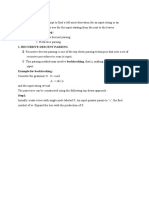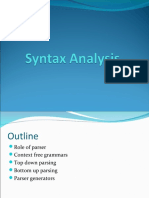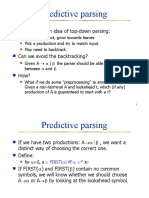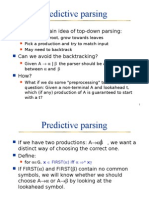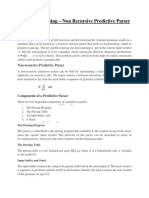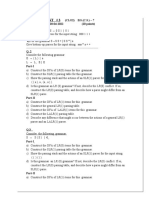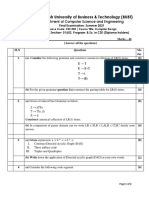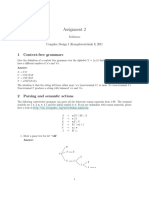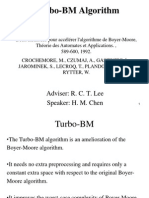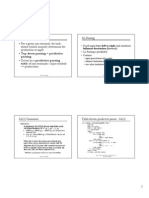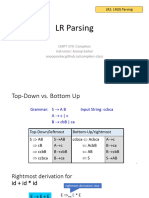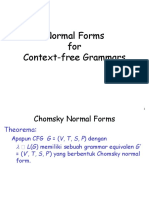0% found this document useful (0 votes)
23 views8 pagesCompiler Construction Week 4 Lecture 7 Part 2
A Recursive Descent Parser is a top-down parser that uses mutually recursive functions for each non-terminal in a grammar, operating with a 1-token lookahead (LL(1)). It is effective for simple grammars but cannot handle left recursion or ambiguity, requiring grammar transformations for predictive parsing. Predictive Parsing, a non-backtracking variant, builds parse trees efficiently using a parsing table and is suitable for syntax analysis in compilers, but also requires LL(1) grammars.
Uploaded by
bella.shine7799Copyright
© © All Rights Reserved
We take content rights seriously. If you suspect this is your content, claim it here.
Available Formats
Download as PDF, TXT or read online on Scribd
0% found this document useful (0 votes)
23 views8 pagesCompiler Construction Week 4 Lecture 7 Part 2
A Recursive Descent Parser is a top-down parser that uses mutually recursive functions for each non-terminal in a grammar, operating with a 1-token lookahead (LL(1)). It is effective for simple grammars but cannot handle left recursion or ambiguity, requiring grammar transformations for predictive parsing. Predictive Parsing, a non-backtracking variant, builds parse trees efficiently using a parsing table and is suitable for syntax analysis in compilers, but also requires LL(1) grammars.
Uploaded by
bella.shine7799Copyright
© © All Rights Reserved
We take content rights seriously. If you suspect this is your content, claim it here.
Available Formats
Download as PDF, TXT or read online on Scribd
/ 8
